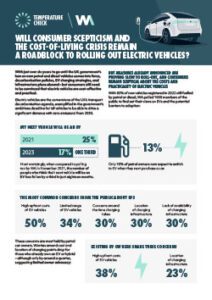The Liberal Democrats entered into this year’s conference in Bournemouth as the third largest party in Parliament, having won 72 seats at the last general election, and with stronger representation on parliamentary scrutiny bodies than other smaller opposition parties. But recent weeks have seen difficulties – criticism that messages are struggling to cut-through, with Leader Ed Davey’s stunts being cited as an unhelpful distraction, and a membership keen to be taken seriously. The critical question is now where Davey will focus over the coming months to strengthen the party’s position and properly capture the opportunity held by a future election.
Discussion at fringe events focused on the fact that despite positive action from the Government in some areas – including on the NHS and publication of the 10-Year Health Plan, which Health and Social Care Spokesperson Helen Morgan described as including “a lot of good Lib Dem stuff” – Keir Starmer is struggling to deliver against Labour’s ambitions. But are the Lib Dems ready to step into the breach?
Below are my key takeaways from my time in Bournemouth for WA Comms.
A party struggling to meet potential with action
During a session with ReformWatch (Ed Davey’s scrutiny board, bringing together local Liberal Democrat leaders in areas where Reform has taken control), panellists remarked on the need to deliver an alternative offer to voters. Members mused on whether MPs should focus efforts towards local party engagement vs speaking out in Parliament.
And yet, there was a distinct lack of excitement about what a Lib Dem vision for change would look like. On health, there seems to be increasing noise on the need to show a detailed position beyond just a view on social care reform – especially with this now being taken forward via Baroness Casey’s cross-party Independent Commission. Helen Morgan remarked on the need for the 10 Year Health Plan to go further on areas such as mental health – is this an area where a Lib Dem proposal could be set out to voters?
On the issue of Reform more broadly, discussion at conference highlighted clear concerns that Farage’s party is dominating media coverage and delivering cut-through with voters. Davey refused to confirm which other parties he would form a coalition with – aside from Reform – if the Lib Dems were once again to hold the power to form a government at the next election.
Business engagement
Lib Dem conference is traditionally less business-focused than Labour and Conservatives, and more an opportunity for members to come together.
However, this year the Lib Dems have sought to demonstrate that they are not ignorant to the needs of business. In response to a question on the current life sciences landscape, Helen Morgan responded that ‘we need to think hard about how to make the UK an attractive place to do business’, describing the loss of industry investment in the UK as ‘a disaster’ from a patient perspective.
Support for engaging with business also came through in Davey’s public call to UK businesses to join the party’s fight against Reform: “If you want to stop Reform, if you love your country, come and join the Liberal Democrats, come and talk to us. Ideally support us financially as well.”
Sector-specific policy discussions included:
- Health: When addressing the UK’s response to the current state of cancer research, Davey stated that the UK should step up and back the research that the US is halting and should boost funding for cancer research in the UK. He also called on the UK to build a new cancer research institute, pass the Cancer Survival Research Act and invest in mRNA vaccines to explore their potential treatment of cancer. The party also set out calls for social media apps to carry mandatory health warnings for under-18s.
- Energy: Daisy Cooper MP, Treasury Spokesperson, set out a proposed time-limited windfall tax on banks to fund a new Energy Security Bank. The bank would use the one-off initial £2bn-7bn in capital, raised through the bank windfall tax, to create affordable loans of up to £20,000 for homeowners and £50,000 for small businesses and community energy groups.
- Education and skills: Universities and Skills Spokesperson Ian Sollom MP highlighted the party’s Opportunity for All policy structured around three pillars – the individual, the employer and the education provider. Sollom advocated for individual empowerment through lifelong learning grants, better career guidance, SME support via skills cooperatives, and fairer funding for further education colleges, including extending the pupil premium and addressing VAT and pay disparities
Future engagement
We understand that the Lib Dems are actively in the process of policy development. Shaped by party members and spokespeople, policy is reviewed more frequently than the standard 5–10-year cycle. A new Policy Work Programme is currently underway, which will lead to the commissioning of a series of working groups – responsible for gathering external evidence from stakeholders (from Q4 2025 into Spring next year).
This process – combined with the fact the Lib Dems have considerably more MPs on select committees and Bill Committees than other opposition parties and a strong presence in the House of Lords, and with all to play for when it comes to a future general election – means engagement with the party remains important.
Looking forward
The phrase ‘holding feet to the fire’ rang throughout the conference halls – but who’s feet this refers to remains unclear. Do the Lib Dems continue to take on Reform (positioning themselves as a more moderate alternative perspective), the Conservatives in their Opposition role or take on the Government to try and win more Labour seats at the next election?
The Lib Dems understand they need a strong, bold position to cut-through. They just don’t seem to currently know exactly what it is, but door to ideas is certainly open!
